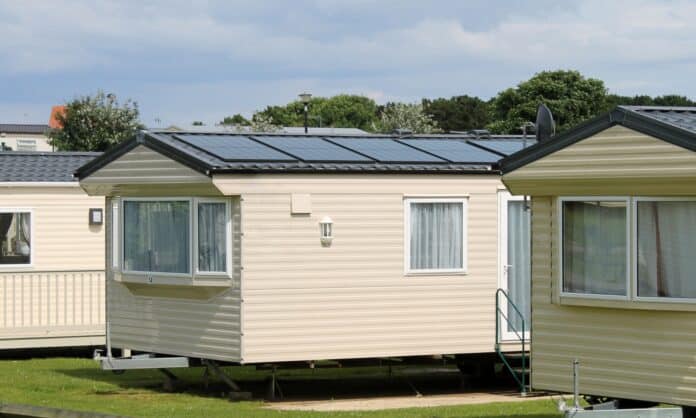Mounting solar panels on your mobile home will revolutionize how you live. They’re the number one way to save money on electricity, reduce greenhouse gas emissions, and achieve energy independence.
In this article, you’ll learn everything you need to know about:
- The benefits of solar panels for mobile homes.
- How to choose solar panels that work for your specific needs.
- How to calculate your mobile home’s electricity consumption so you can pick the right solar panels.
- The components of a solar power system for mobile homes.
Keep reading and discover the key to solar powering your mobile home.
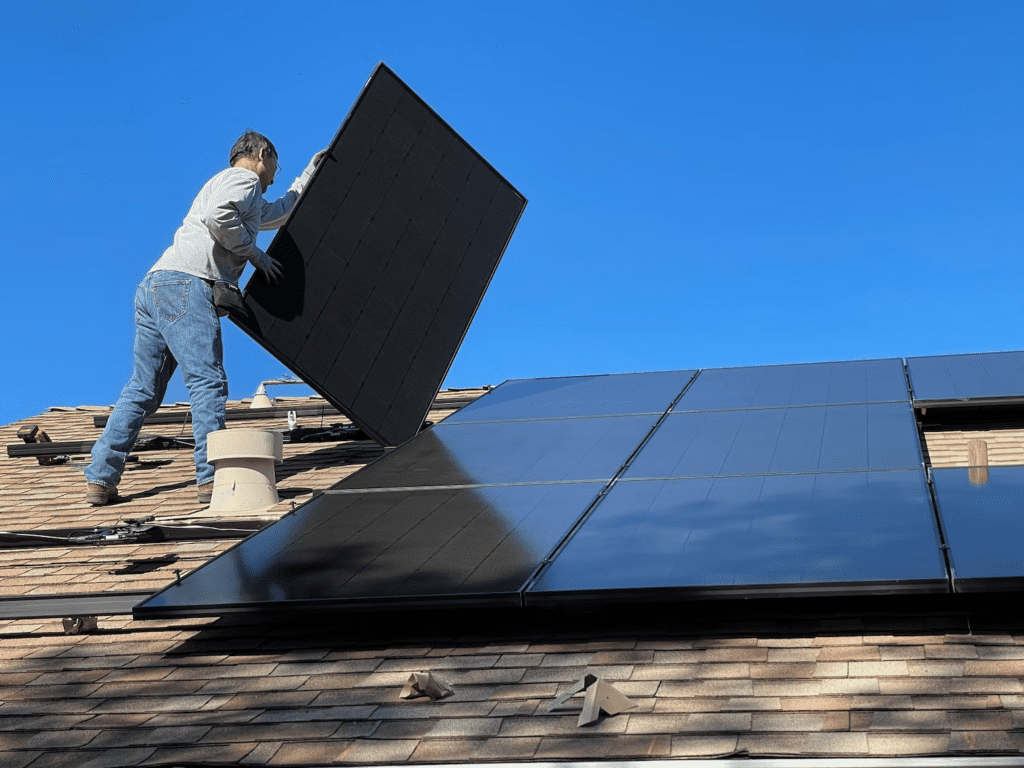
Do Solar Panels Work for Mobile Homes?
Pre-fab mobile homes and trailers are practically built for solar power adoption. Manufactured homes generally have flat or only slightly pitched roofs, perfect for solar panel mounting. Plus, the total energy consumption required by your average mobile home won’t usually exceed what a solar system can generate.
Data from the U.S. Energy Information Agency suggests that by 2050, renewables will be the leading energy source in the United States. Solar, in particular, is on an incredible upward trend. Research from the Solar Energy Industries Association suggests that one in eight homes will have solnar power by 2030.
Most renewable energy research revolves around large-scale commercial solar and fixed residential use. But mobile homeowners stand to benefit just as much as anyone else, perhaps even more.
Not only do solar panels work for mobile homes, but they can also transform how you live.

Benefits of Solar Panels for Mobile Homes
Installing a solar power system on your mobile home has many positive benefits, from personal to global and financial to environmental.
Here are just some of the ways switching to solar can benefit you.
Financial Savings
Don’t get sticker shock when you see the initial price of an off-grid mobile home power solution. The right solar power system can eliminate your electricity bills and save you substantial money over the long term.
After your solar payback period is complete, your investment in off-grid power really starts to pay off. And the ROI can be substantial.
The U.S. government offers a federal tax credit of up to 30% of the price of a new residential solar system, and yes, that applies to mobile homes. You may also qualify for additional government incentives.
Of course, you want to reduce the initial cost as much as possible — and financing your purchase over time is usually an option.
But once you’ve purchased your solar panel system, deriving power from the sun is 100% free. Within several years, you’ll start to see a return on investment.
Energy Independence
Many mobile homeowners are drawn to off-grid renewable power systems by the prospect of energy independence. Prefab homes can typically hook up to the electricity grid like site-built homes. But they consume 53% more energy than non-manufactured homes, according to the Environment and Energy Study Institute. Mobile homeowners often spend as much as half their income or more on utility bills.
With solar power, you can free yourself from the high costs of grid-tied energy. Not only that, you can reduce the impact of unpredictable energy costs and an increasingly unreliable electrical grid.
Installing solar photovoltaic panels on your prefab home will help lessen your dependence on aging infrastructure — and save you money.
Environmental Benefits
The environmental benefits of solar systems are substantial. Electricity production accounts for 25% of all greenhouse gas emissions. It’s in everyone’s best interest to stop burning fossil fuels to generate electricity.
Wind and solar provide limitless amounts of energy that we can use to power everything from a single mobile home to an entire community — leading to environmental benefits and reduced electricity costs over the long term.
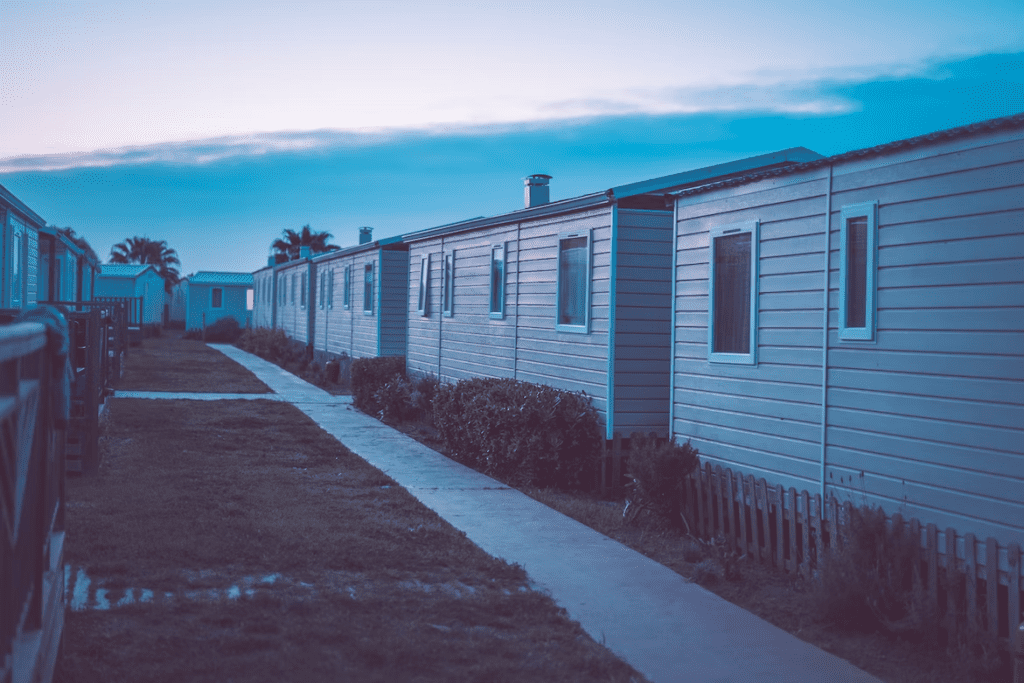
Drawbacks and Challenges of Solar Panels for Mobile Homes
Not every mobile homeowner will find solar panels suitable for their situation. Some potential disadvantages include:
- Steep upfront purchase and installation costs
- A different kind of dependence: Portable power stations can store plenty of power, but relying on solar energy alone can leave you vulnerable if you can’t generate enough electricity to meet your needs
- Space constraints: Even if you don’t have to worry about a rooftop solar panel installation taking up any interior space, balance of system components can be quite large, especially the cheaper options. An all-in-one solution like EcoFlow’s portable power stations won’t take up too much room inside your mobile home.
- Battery cost: The cost can be prohibitive if your system relies on lead acid batteries that need frequent maintenance and replacement.
You can mitigate all of these challenges by investing in the right system. The financial, personal, and environmental benefits far outweigh any disadvantages.

How to Determine Your Mobile Home’s Energy Needs
Do you stand to benefit from installing solar panels on your mobile home?
Find out by determining your total electricity consumption needs.
Here’s how:
- Identify the wattage requirements of your appliances and HVAC systems. Survey the starting and running wattage requirements of your appliances, HVAC systems (if required), and devices you plan to plug into the solar generator. You can usually find the wattage requirements labeled on the appliance, but we’ve also compiled the starting and running watts of typical household appliances in the table below.
- Convert volts/amps to watts. If your appliance’s power requirements are in volts or amps, you can calculate an appliance’s running watts with this equation:
Volts (V) x Amps (A) = Watts (W)
- Count the running watts of your appliances. Add up the running watts of the appliances you plan to use — does the total exceed the running watts listed on your generator? If so, consider buying a generator with more output capacity.
- Factor in starting watt requirements. Identify the appliance with the highest starting wattage. Add that appliance’s starting wattage to the running wattage total.
- Calculate the sum. That final number is the total starting watts you need from your generator. As discussed above, to avoid overloading your generator, do not exceed its starting watts rating.
Starting and Running Watts of Typical Household Appliances
| Appliance | Rated (Running) Watts | Starting Watts |
| Dishwasher | 1300 | 1800 |
| Washing Machine | 1200 | 2300 |
| Refrigerator/Freezer | 700 | 2200 |
| Light Bulb | 60-75 | 0 |
| Microwave | 600-1000 | 0 |
| TV | 500 | 0 |
| Toaster | 900 | 0 |
| Vacuum | 1440 | 2500 |
| Coffee Maker | 1000 | 0 |
| Blender | 300 | 800 |
| Clothing Iron | 1500 | 0 |
| Dryer | 5400 | 7000 |
| Toaster Oven | 1200 | 0 |
| Curling Iron | 1500 | 0 |
| Space Heater | 2000 | 0 |
| Laptop | 50-300 | 0 |
| 20” Box Fan | 200 | 350 |

Choosing the Right Solar Panels for Your Mobile Home
Not all photovoltaic (PV) panels are alike, and each mobile homeowner has different needs. You must weigh factors like trailer size, electricity consumption needs, and average peak sunlight hours in your location.
Here’s what to look for to ensure you get the right off-grid solar energy system for you.
Types of Solar Panels
There are three types of photovoltaic panels: monocrystalline, polycrystalline, and thin film.
Monocrystalline is the most efficient, while polycrystalline is often less expensive. Thin-film photovoltaics are flexible and affordable but also produce the least electricity.
You can also choose between rigid, portable, and flexible solar panels — or mix and match them to meet your requirements.
Different Panel Sizes and Wattage
The average mobile home uses about 9 kilowatt-hours (kWh) of electricity per square foot per day. Most mobile homes range between 600 and 1200 square feet. Because of their construction, mobile homeowners consume up to 70% more electricity than owners of site-built homes — much of it on heating and cooling.
The size, rated power output, and the number of panels you‘ll need depends primarily on your mobile home’s size and electricity consumption.
Generally, PV panels with higher rated power and efficiency are preferable since you can get more energy with fewer panels. To maximize electricity generation, look for 400W rigid solar panels.
If you don’t want to permanently mount your panels on the roof, purchase 400W portable solar panels. They have the same rated power, but you can move them around and set them up on the ground.
It’s also crucial to realize that the rated power of a solar panel indicates the maximum amount of electricity it can produce under ideal circumstances. Rated power is determined in a laboratory using Standard Test Conditions — due to environmental factors, these conditions rarely occur in the real world.
Depending on location and other factors, expect to achieve anywhere from 25% to 90% of your panels’ rated power wattage for each daylight hour.
Here are some of the environmental factors that impact solar energy production
- Cloud cover
- Temperature
- Shade (From trees/other buildings/etc.)
- Dirt and debris
Keep your panels clean and out of the shade as much as possible, but you’re somewhat limited in what you can do about cloud cover and temperature. That’s why taking the average peak sun hours in your location into account is so crucial.
Understanding Efficiency Ratings
Solar panel efficiency refers to the capacity of a photovoltaic panel to convert sunlight into electricity. For example, EcoFlow’s 400W rigid solar panel has an industry-leading efficiency of 23%. That means that 23% of the sunlight hitting the panel will be converted into electricity.
The average PV panel efficiency rating is between 15% and 18%, and it tops out at around 23%. The higher your panels’ efficiency rating, the more electricity your panels will generate under any degree of sunlight.
Evaluating Your Space and Roof Pitch
The structure and design of your roof should also play a role in your purchase decision. The available square footage receiving direct sunlight matters, as this will dictate how many panels you can mount on your roof and what size, efficiency, and rated power output makes the most sense.
As a general rule, the more hours of peak sunlight you receive at your location, the fewer solar panels you’ll need to meet your electricity consumption needs.
Most mobile home roofs can easily support the weight of a rigid solar panel installation. However, if you have doubts about whether it’s structurally sound, have it evaluated by a professional before purchasing.
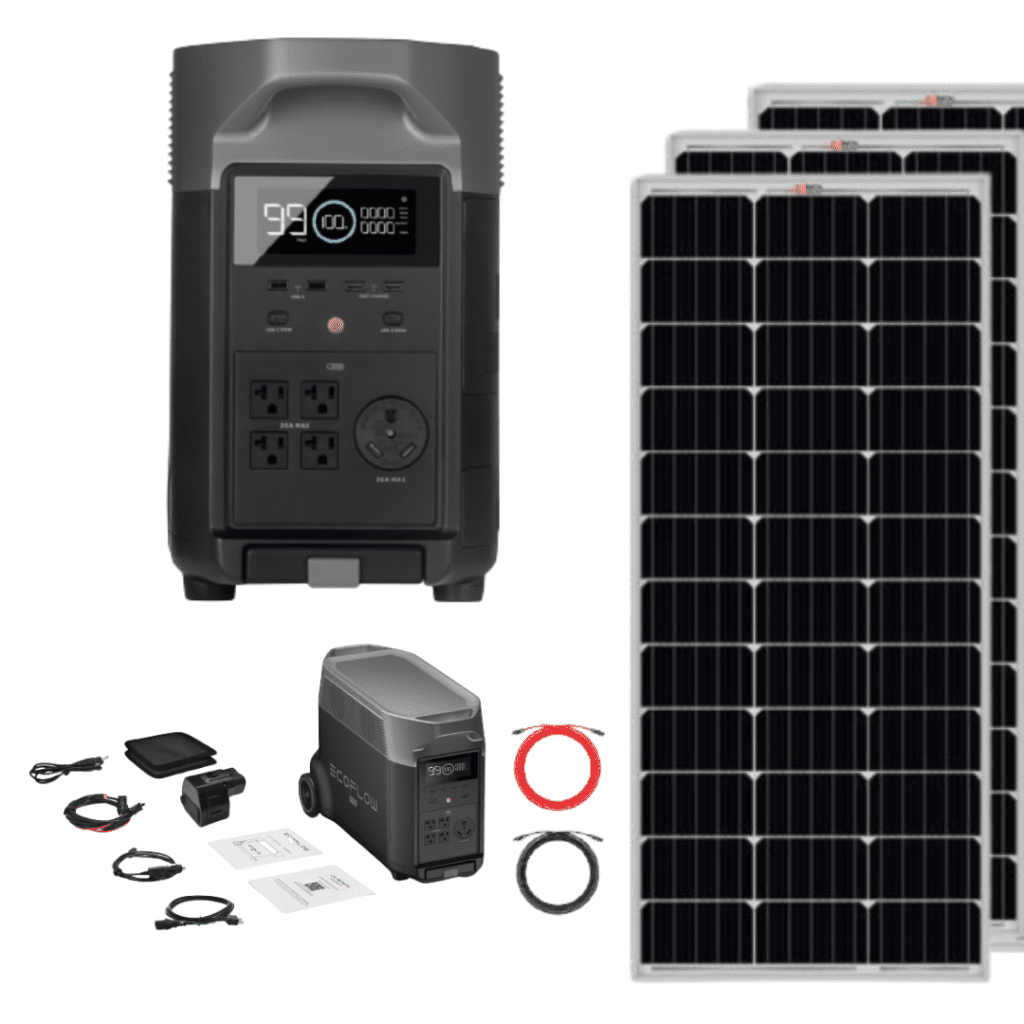
Components of a Solar Panel System for Mobile Homes
To set up a solar power system for a mobile home, you need more than just solar panels. Here’s a summary of the essential components.
The Importance of a Solar Battery
Solar panels capture the sun’s energy, but to tap into generated electricity during the night or when your demand exceeds supply, you need a solar battery. A solar battery stores electricity so that you can use it any time of the day or night.
EcoFlow’s portable power stations come with a solar battery and all the other balance of system components built in and are expandable up to 25 kWh of electricity storage capacity.
Typically, you can buy a solar battery with sufficient storage capacity — or several batteries — to meet your electricity consumption needs.
Types of Solar Batteries for Mobile Homes
There are several types of solar batteries, including lead-acid, lithium-ion, lithium-ion phosphate (LFP/LiFePO4), and nickel-cadmium.
Lead acid and lithium-ion batteries are the most common. Lead acid has been around the longest and is the cheapest option. However, the lifespan of lead acid batteries is up to 10 times shorter or less than lithium-ion batteries. Lead acid batteries also require routine maintenance and have restrictions on where they can be stored.
Given these considerations and others, lead acid batteries are rarely the best choice.
Lithium-ion and Lithium-iron phosphate batteries have a high energy density yet are more compact than lead-acid or nickel-cadmium. They’re also far more efficient and longer-lasting than lead acid, giving you much better value for your money in the long term. L-ion solar batteries can typically recharge and discharge thousands of times without losing efficiency. Lead acid batteries typically only last a few hundred cycles.
Solar Charge Controller Sizing
A charge controller prevents your battery or batteries from being under or overcharged. You can configure them to shut your system down if capacity falls below a certain level to extend your battery life. An effective solar charge controller also blocks reverse currents to protect your panels. Make sure you have a charge controller that can handle the total wattage of your system.
Inverter and Wiring
An inverter converts the DC electricity produced by the photovoltaic panels into AC electricity used by most household appliances and electronics. The inverter is a built-in component with EcoFlow portable power stations like the EcoFlow DELTA Pro or plug-and-play solutions for mobile homes like the EcoFlow Power Kits.
Depending on the balance of system (everything but the panels) you select, wiring can be complicated — or it can be plug-and-play. The more standalone components that need to be wired together, the more complex (and expensive) the installation. And you run the risk of running into compatibility issues if you buy the components from different manufacturers.
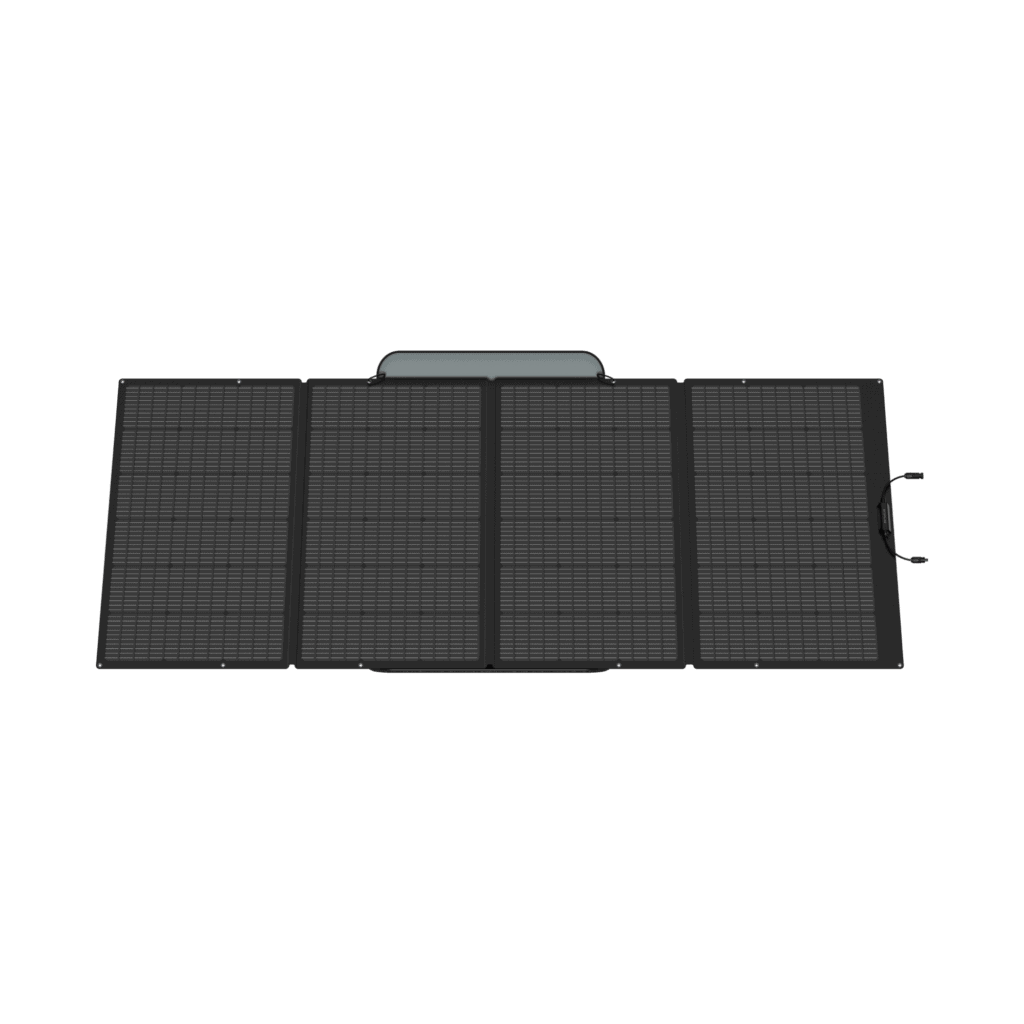
Conclusion
Mobile homeowners can save money and gain energy independence with off-grid solar panel systems. Check out EcoFlow to shop for solar panels, portable power stations, and whole home generators.
Our compact, powerful systems will save you money on your electricity bills — or eliminate them completely.
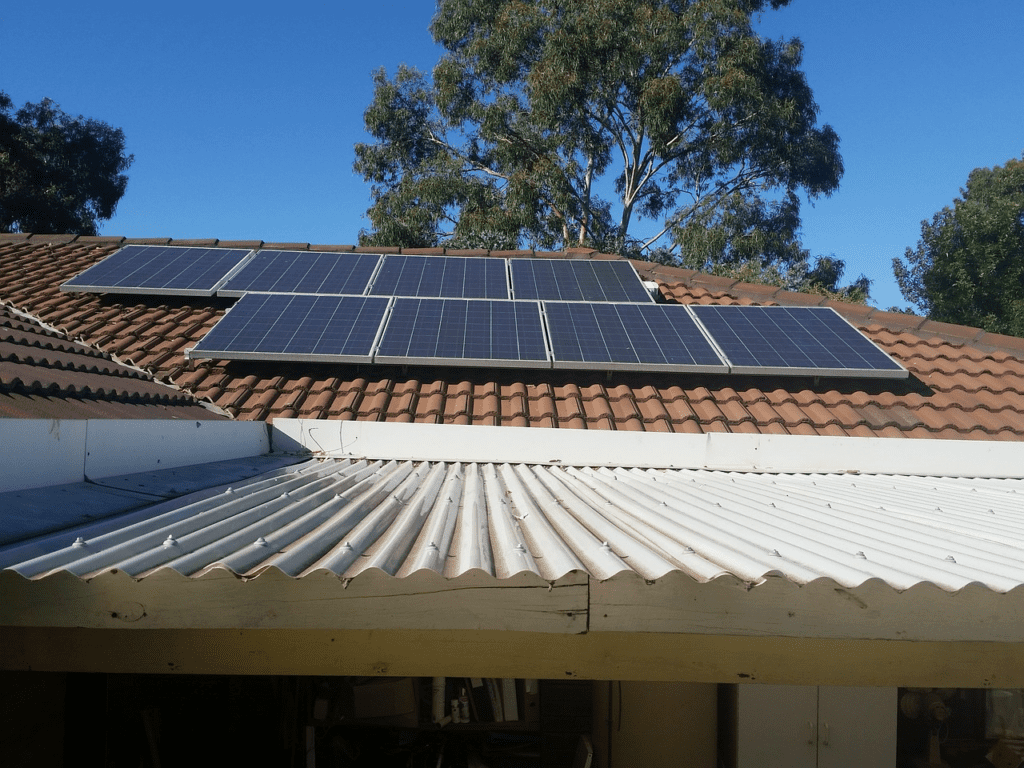
Frequently Asked Questions
Yes, you can use EcoFlow rigid, portable, or flexible solar panels on mobile homes. The weight and size are suitable for mobile home roofs. If you have concerns about the roof supporting a rigid array, you can invest in portable solar panels instead. Remember that the amount of electricity your system can store and deliver also depends on its maximum solar charging, storage, and AC output capacity. If you purchase more solar panels than your portable power station or other balance of system can handle, you’ll be throwing money (and electricity) away.
How many solar panels you need depends on your total electricity consumption, the rated power output of your panels (wattage), and the amount of available space that receives direct sunlight. Your location also plays a huge role — the more hours of peak sunlight you receive, the fewer solar panels you’ll need.
For structures with limited space, some combination of rigid, flexible, and portable solar panels may be your best bet. However, photovoltaic manufacturing and design innovations have made for smaller and more efficient panels, meaning you can likely power your entire mobile home with a rooftop array.
Most solar panels aren’t too heavy for mobile homes, but it depends on several factors, like the roof’s pitch, structural integrity, and the weight of the panels. Portable panels are an excellent alternative to rigid solar panels if you wish to set up part or all of your array on the ground.
Solar panels are an excellent investment for mobile homeowners. Mobile homes use more energy than non-manufactured homes. With solar panels, you’ll reduce or eliminate costly electricity bills. The average solar payback period for residential systems is 6-10 years. But since mobile homes use so much more electricity than traditional houses, you may recoup your investment much sooner.
